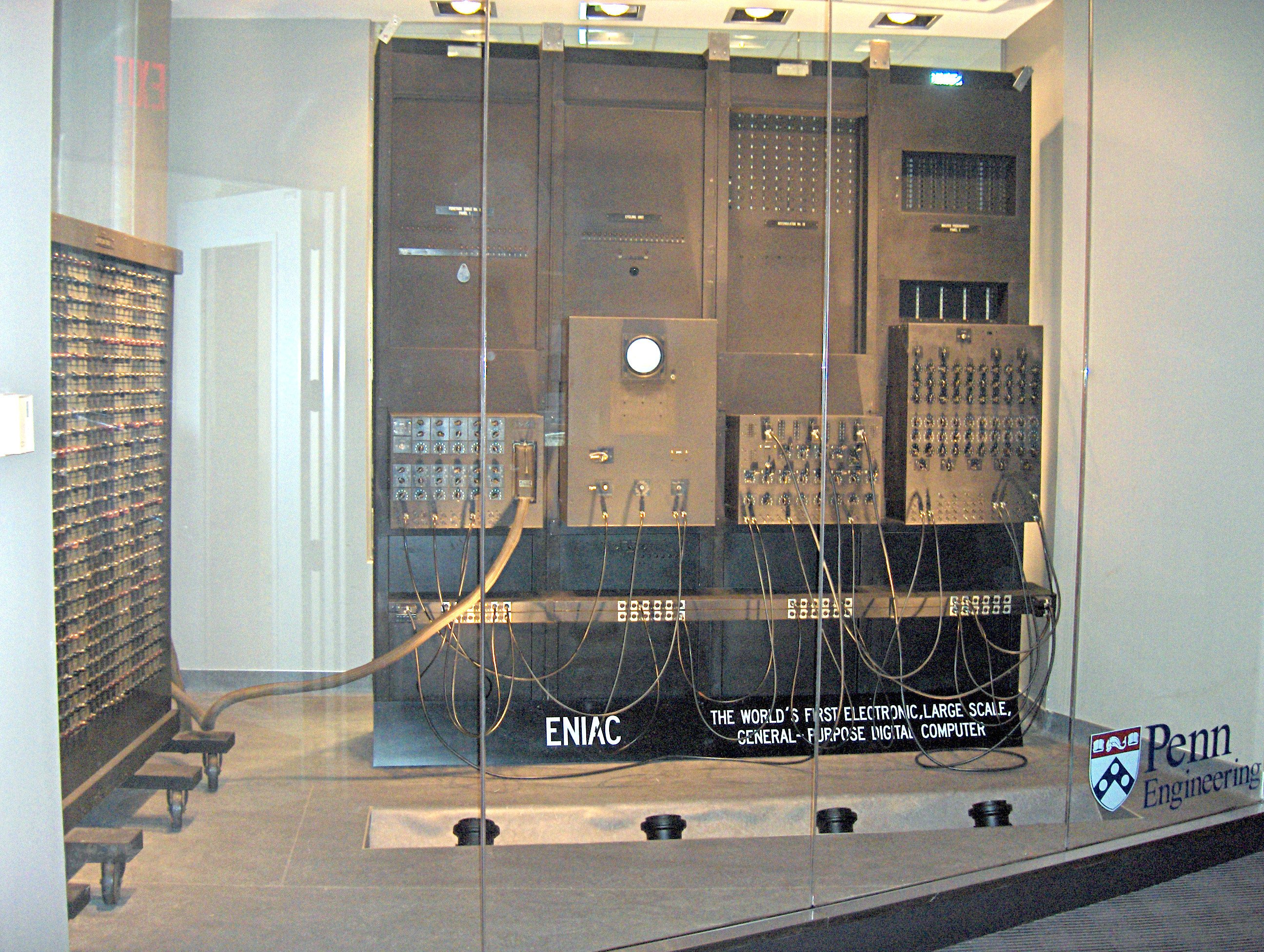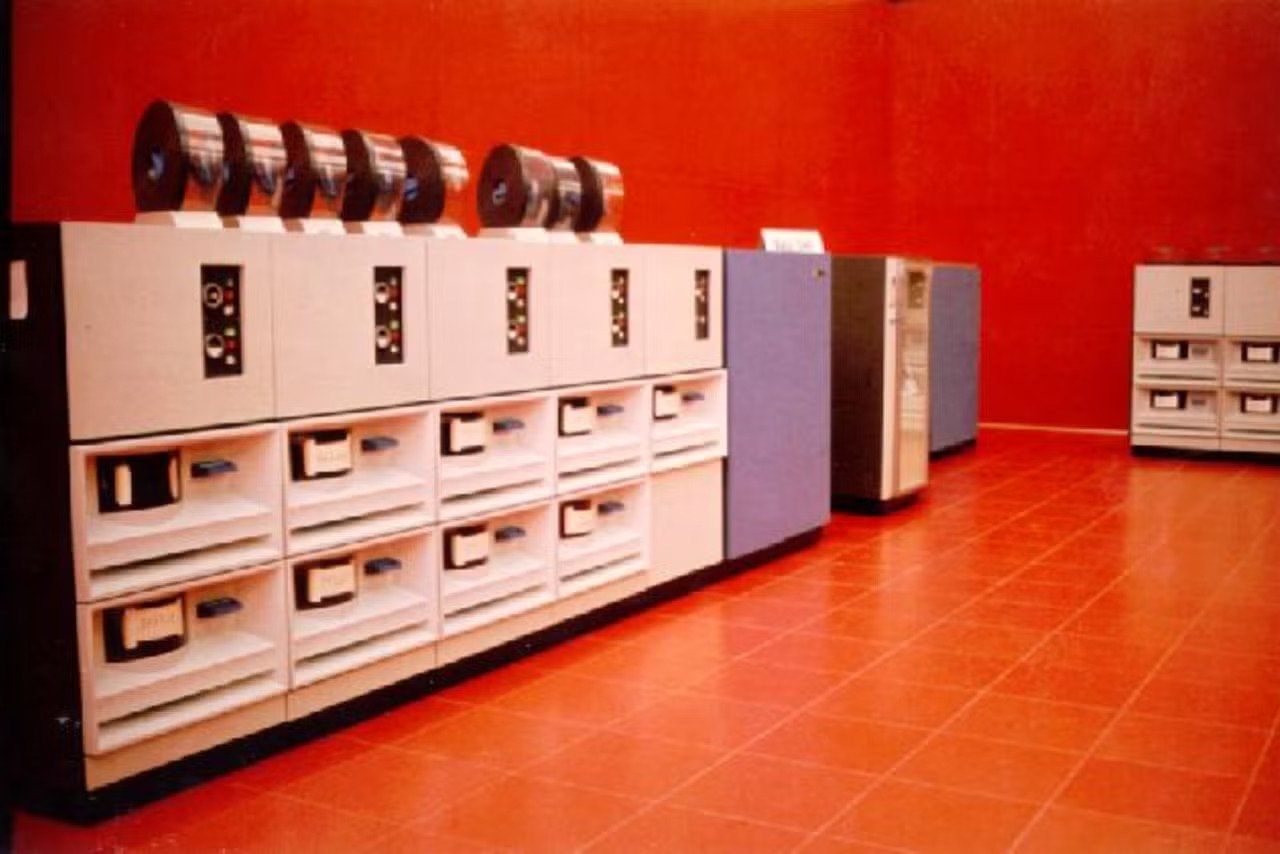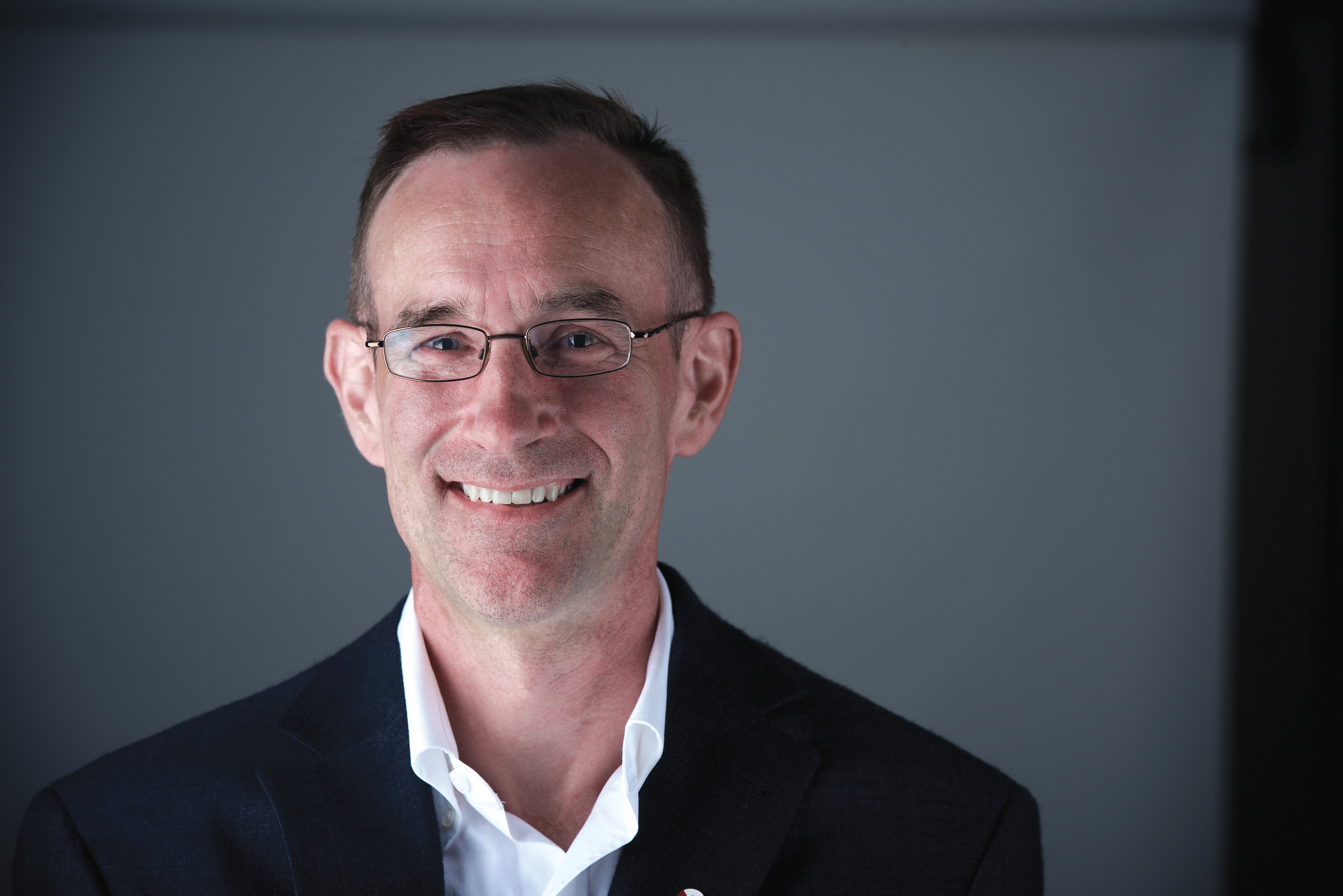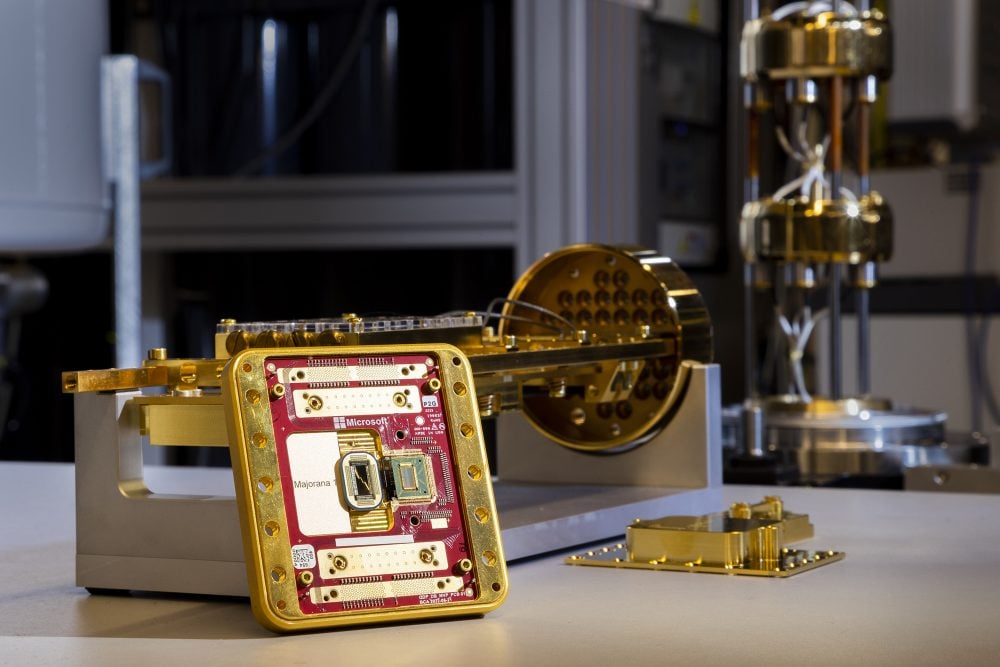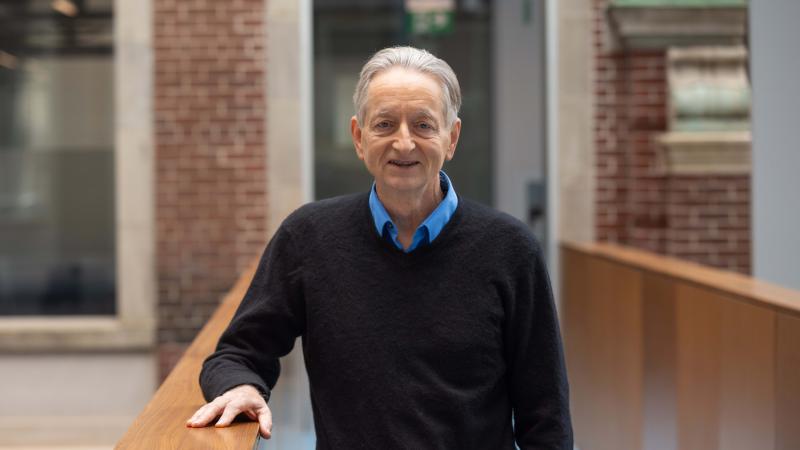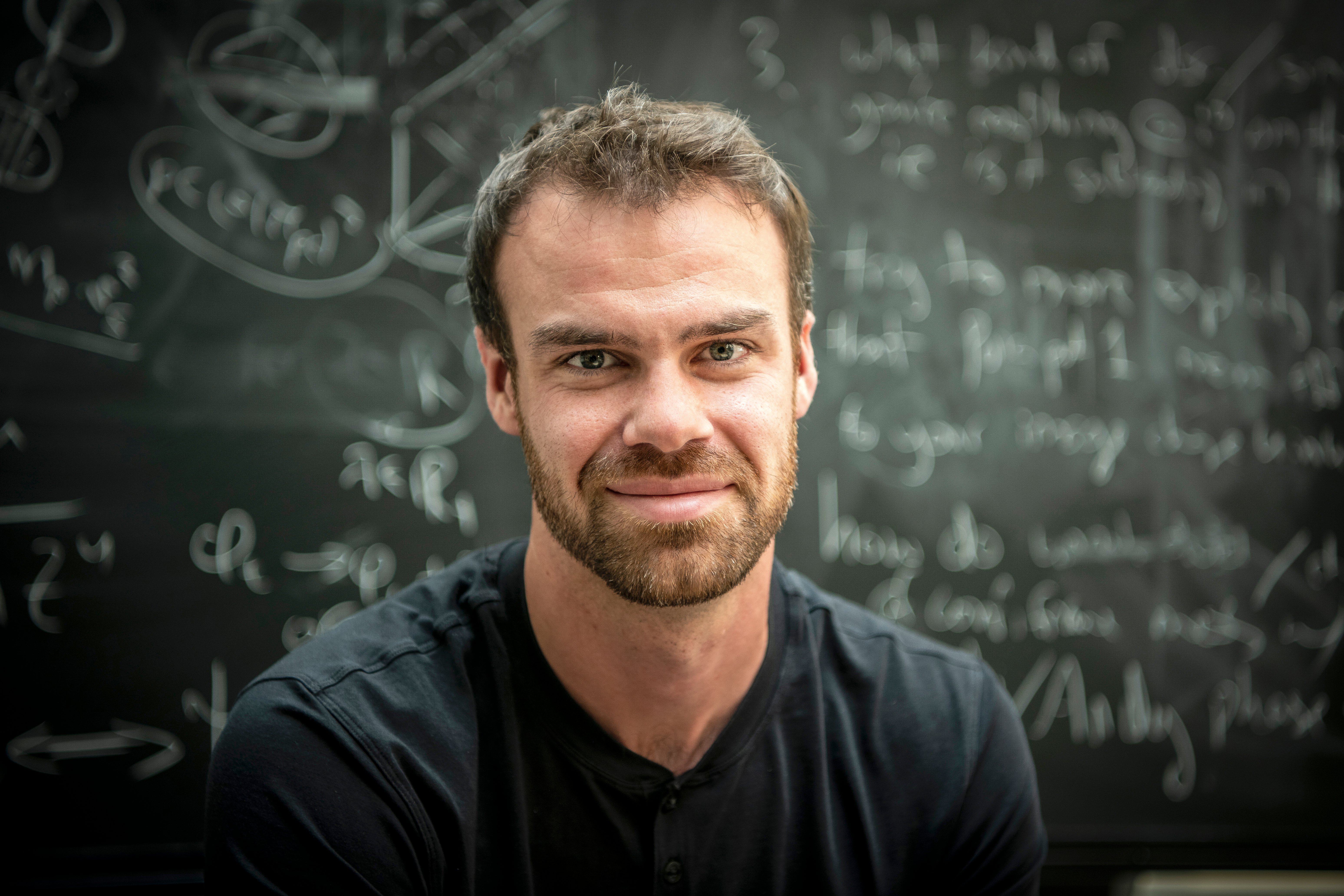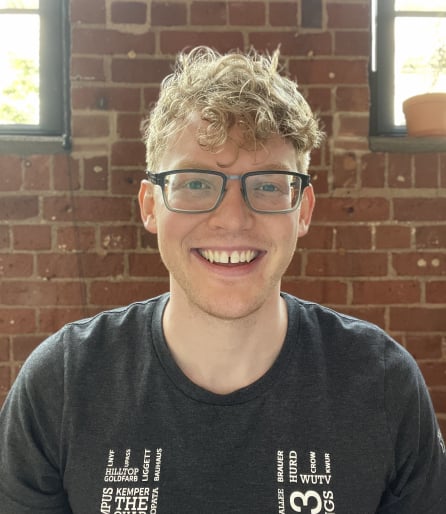“Otherwise stated, every physical quantity, every it, derives its ultimate significance from bits, binary yes-or-no indications, a conclusion which we epitomize in the phrase, ‘it from bit.’”
—John Wheeler, “Information, Physics, Quantum: The Search for Links” in Proceedings of the Third International Symposium on the Foundations of Quantum Mechanics. Tokyo, 1989.
“Atoms on a small scale behave like nothing on a large scale, for they satisfy the laws of quantum mechanics. So, as we go down and fiddle around with the atoms down there, we are working with different laws, and we can expect to do different things. We can manufacture in different ways. We can use, not just circuits, but some system involving the quantized energy levels, or the interactions of quantized spins, etc.”
—Richard Feynman, December 29, 1959. “There’s plenty of room at the bottom,” a talk that predicted quantum computers, given to the annual meeting of the American Physical Society at Caltech and published in the February 1960 issue of Caltech’s Engineering and Science.
One century ago, an entirely new understanding of nature sprung from the minds of physicists such as Werner Heisenberg, Max Born, Wolfgang Pauli and Erwin Schrödinger.
Quantum mechanics — the description of particles and forces at the very foundation of nature and quantum field theory, which combines quantum mechanics with relativity and was developed by Paul Dirac in 1927 — created the modern world.
As the implications percolated into the scientific community, the reaction in many quarters was surprise, or even shock. People began to grapple with the scientific and philosophical consequences of concepts such as Heisenberg’s uncertainty principle, and thought experiments such as Schrödinger's cat.
Humanity’s understanding of the universe shifted in profound ways.
We still don’t fully understand it, but quantum theory has been highly successful. Technologies such as lasers, transistors, medical imaging, and ultimately the computers and quantum computers of today are possible because of it.
This year, the world is celebrating the International Year of Quantum Science and Technology, a tribute to what the scientists of 100 years ago accomplished.
Meanwhile, Perimeter Institute — which has a robust and thriving quantum information research group — is marking 25 years since its founding and paying tribute to the astounding achievements that have happened since then.
The founders of quantum mechanics didn’t have the means or even the ability to imagine ordinary computers, let alone quantum computers.
But their theories were the first step toward what we now call “quantum information,” a field that is all about how to use the foundational elements of nature itself.
With the unveiling of the first general purpose electronic computer, the room-sized Electronic Numerical Integrator and Computer (ENIAC), at the Moore School of Electrical Engineering (now Penn’s School of Engineering and Applied Science) in 1946, people began to think about “information” in a whole new way.
In the 1960s, when computers still sat in huge rooms like the Red Room at the University of Waterloo, and the laptop was not yet even possible, the famous physicist Richard Feynman predicted that one day, we would be able to manipulate “some system involving the quantized energy levels, or the interactions of quantized spins.” He was imagining a quantum computer.
And in 1989, another famous physicist, John Wheeler, coined the phrase “it from bit,” suggesting that everything, at the end of the day, is composed of information.
Today, quantum information theory at Perimeter Institute spans many aspects of physics, from quantum computing and quantum gravity to the research into new quantum materials happening in the Clay Riddell Centre for Quantum Matter, supported by the Riddell Family Charitable Foundation.
25 years of quantum computing
Recent breakthroughs have caused experts to rephrase Wheeler’s “it from bit” to “it from qubit” or even “it from qudit.”
Qubits (a quantum bit) and qudits (multi-level computational units using more than two particle states) display quantum mechanical gifts of nature known as superposition and entanglement.
Tapping into the quantum nature of particles can give us deeper computational power than anything an ordinary computer (even a supercomputer) can manage operating on just electronic signals.
When Perimeter was formed, about 25 years ago, two of the Institute’s founders, Raymond Laflamme and Michele Mosca, were pioneers in the earliest iterations of quantum computers and quantum error correcting codes.
Laflamme, who helped found Perimeter in 2000, was previously at Los Alamos National Laboratory, where he had been involved in demonstrating the first seven-qubit quantum computer using nuclear magnetic resonance.
He went on to become the first director of the Institute for Quantum Computing (IQC) at the University of Waterloo in 2002, and is now Canada Research Chair in Quantum Computing there, as well as associate faculty at Perimeter.
Mosca, meanwhile, was a faculty member at the University of Waterloo as Perimeter was getting started. He too helped bring about the early implementations of quantum algorithms using nuclear magnetic resonance. He became an early faculty member at Perimeter Institute and today is a professor at IQC and an associate faculty member at Perimeter. He is an expert in writing quantum algorithms and developing post-quantum cryptography aimed at keeping information secure in the age of quantum computers.
A lot has happened in 25 years.
Today, big companies like Intel, IBM, Google and Microsoft are developing quantum computers and quantum computing in-the-cloud services. They are developing new quantum chips that will manipulate more qubits, more accurately.
There are start-ups in the game as well. In Canada, there are quantum software companies like Xanadu that provide quantum computer software, programming and network platforms, and there is Waterloo-based Isara that makes quantum-safe cryptography. There are many others in Canada. There are now Canadian partnerships with companies such as quantum software start-up Haiqu to bring fundamental research and technological innovation closer together. In the United States, QuEra and Atom Computing are also examples.
The public may not be aware of it, but there is a thriving quantum business ecosystem emerging. Meanwhile, the training done at Perimeter and IQC produces an award winning and highly talented workforce for these companies in Canada and around the world.
There are still challenges ahead to make quantum computers practical. Some companies have made claims of achieving quantum supremacy or quantum advantage (that is, to show that a quantum computer can solve certain types of problems that would take a prohibitively long time using even on a supercomputer).
But the everyday use of quantum computers has nevertheless been elusive. They are still very error prone. Any “noise” – which can be anything that will disrupt the delicate quantum computing system such as electromagnetic interference, cosmic rays or imperfections in the gate operations used to manipulate the qubits— can lead to quantum decoherence, the loss of the special quantum properties that allow the quantum computing to happen.
Perimeter’s associate faculty members (also associated with IQC) like Roger Melko and Christine Muschik are finding new ways to overcome these problems.
Melko founded the Perimeter Institute Quantum Intelligence Lab (PIQuIL) focused on exploring the intersection between AI and quantum physics through research and training collaborations between academia, government, and industry.
More recently, he helped co-found Open Quantum Design, a non-profit organization dedicated to developing a full-stack, open-source trapped ion quantum computer at the University of Waterloo.
Melko has been exploring the intersection of artificial intelligence and quantum computing, adapting the algorithmic structure of large language models used in chatbots like ChatGPT to advance quantum computer simulations.
He says the structure of the algorithms for large language models is a good fit for quantum computing because the large language models are inherently probabilistic.
An AI chatbot uses a probability distribution to provide answers that are likely to be correct. “That translates well into representing quantum states that are also intrinsically probabilistic,” Melko adds.
With collaborators at Harvard, a team led by Melko developed a large language model that could take data from a type of quantum computer that uses laser-cooled neutral atoms as qubits. “We’ve successfully taken data from a quantum computer, learned the distribution, and were able to prompt it to generate new data, like you would a chatbot,” Melko says.
“The idea is that if we can use large language models on real quantum computers, we can learn more about how a quantum computer design might behave. So, it could be a design tool.”
He says algorithms inspired by large language models can also be useful in quantum error correction, to overcome the errors caused by decoherence.
“We were the first here at Perimeter to suggest that one could perform quantum error correction with these probabilistic generative models,” Melko says.
In many ways, Melko has been building upon the work of Canadian Nobel Prize winning scientist Geoffrey Hinton, who was co-winner of the award given last year for pioneering work in the field of artificial intelligence.
Hinton is known for the Boltzmann machine, a type of artificial intelligence learning model that is inspired by statistical physics. It can be used to classify images and identify patterns, something that today’s much more sophisticated machine learning is great at.
“We adapted Hinton’s famous architecture to show that we could use it to train and detect errors in quantum devices and suggest corrections,” Melko says. The research, which showed that an AI neural network could identify phase transitions between states of matter was published in Physical Review Letters. Eventually, that strategy was adopted in Google’s quantum error correcting AI model, AlphaQubit as well, Melko adds.
Melko’s entry into quantum information and quantum computing actually began in a completely different field. When he was doing his PhD in condensed matter at the University of California, Santa Barbara, he became interested in how ceramic materials known as cuprates become superconducting (they can conduct electricity with zero resistance at a certain critical low temperature.)
How superconductivity “emerges” in materials like cuprates involves understanding how electrons collectively behave and interact. It’s known as a many body problem in physics.
“My approach was very much computationally based. I have always been a computational physicist, or numericist (someone who specializes in numerical methods),” Melko explains.
Toward the end of his PhD program, he began using a tool known as tensor network algorithms to understand how many electrons interact. That involved understanding entanglement, which is a quantum property that fuels quantum computing. That’s how he went from quantum matter to quantum computing.
Meanwhile, Christine Muschik is taking quantum computing to a whole new level, with her work that goes beyond qubits and into the multi-level realm of qudits. Muschik’s theory team has been working with an experimental group at the University of Innsbruck in western Austria using a trapped ion quantum computer that manipulates calcium ions (charged calcium atoms) to do quantum computing at higher dimensions, not just the zero and one superpositions of qubits. Their work was recently published in Nature Physics.
Muschik says that using the qudits allows a quantum computer to do more with less, and thus reduce the errors.
The future of quantum computing
Quantum computing has obviously come a long way in the 25 years since Perimeter was born, but we have a long way to go.
“There is now a solid proof of principle that quantum computing is not totally crazy,” Laflamme says. “There is a lot of venture capital going into this, and there is interest in many governments in the western world, and Russia and China are also putting money into this.”
Where will we be 25 years from now? It is hard to predict, but, as Laflamme says, even if it’s hard to imagine a quantum computing laptop, there are companies that are already experimenting with providing quantum computing in the cloud, as a service.
Of course, there are also dangers, the main one being that quantum computers could break the encryption that keeps the information in regular computers safe.
As an expert in post-quantum cryptography, Mosca has been working at shedding light on the risks and how to mitigate them. Today, there are companies that specialize in post-quantum cryptography, and that will be an important piece of future technologies going forward.
Mosca advocates a “responsible and balanced approach” so we can reap the benefits of quantum technologies, while making sure we have “cyber-resilience” against bad actors.
If we can mitigate the risks, the potential benefits are huge. The big goal is to scale up quantum computers in order to produce quantum simulations that can model the interactions in nature so as to deepen our understanding of quantum physics.
Quantum computing simulations could help us discover novel materials, new pharmaceuticals, or inexpensive clean energy solutions. There are many other applications we can’t even imagine yet.
But … it’s more than quantum computing
More generally, quantum information is about how information can be represented in the states of quantum systems. Ultimately, that touches on everything at the foundation of nature.
It applies to condensed matter and topological states of matter, an area that Perimeter faculty member Timothy Hsieh is working in. It is also about the question of what happens to information that fall into a black hole. Beni Yoshida, another Perimeter faculty member, is working on that black hole information paradox question and on quantum information “scrambling” inside a black hole. And the study of quantum metrology, which is about measuring the world at the scale of particles, is led by faculty member Sisi Zhou at Perimeter, and this too is part of quantum information.
Alex May, who joined Perimeter in 2023, combines quantum information tools developed for use in quantum cryptography with research into the quantum gravity problem. This may sound surprising – one would not normally think of quantum cryptography, which is part of quantum computing, as being related to quantum gravity. But through quantum information theory, they have a connecting language.
Quantum gravity is the attempt to bridge Albert Einstein’s general relativity (or theory of gravity), with quantum theory.
Both theories are each successful in their own right, but Einstein’s theory describes the smooth and curving spacetime structure in the cosmos while quantum theory describes the discrete particles and forces in nature. Bridging the two would give us a whole new window into how nature operates. That could be as exciting as the development of quantum mechanics was 100 years ago.
Finding the right framework to achieve this bridge has been difficult. But there is a conjecture called the AdS/CFT correspondence that has been promising. AdS stands for anti-de Sitter space, which is a theoretical, special kind of negatively curved spacetime. CFT stands for conformal field theory, which is a special type of quantum field theory.
The AdS/CFT correspondence is used as a “toy model” to help simplify the problem of bridging the two theories. It is often referred to as a “holographic” model because it links particles on a lower dimensional boundary with a special spacetime in the bulk. In that way, it is analogous to a hologram, like a 3D image on a flat credit card.
“But how does the map between them work?” That is a question that May has been working on, and that work has involved using some tools from quantum computing and quantum cryptography.
May explains that quantum cryptography, (which uses properties of quantum mechanics to keep information secure) has a connection to the quantum mechanical property of entanglement.
“Entanglement is the elbow grease of quantum information,” May says.
“Quantum cryptography highlights some of the most surprising features of quantum mechanics, and some of those features of quantum mechanics also appear in quantum gravity,” he says, explaining the connection.
Said another way, researchers in quantum information theory, ask “What useful things can we do, using quantum systems?" They have found that deep features of quantum mechanics reappear in other contexts, including gravity.
This makes the field very broad. “That can make it a fun field to work in,” May says.
The field’s future is in young people such as Tyler Ellison, who is now a postdoctoral researcher at Perimeter. In his work, he is applying quantum information to the field of quantum matter.
Ellison was drawn to quantum information and quantum matter because of the type of math that underlies those fields, but also because in a sense, by understanding the interactions of particles and how it all comes together, “you get to build the world from the ground up, and to me, that is a satisfying approach to physics.”
Ellison initially came to Perimeter on a graduate fellowship during his PhD at the University of Washington in Seattle. He then won a Yale postdoctoral fellowship and now is back at Perimeter as a postdoctoral researcher.
He was recently involved in a project looking at a three-dimensional quantum system in which long-range entanglement can survive even at a non-zero temperature. The paper is currently in preprint.
What the applications of such work will be, no one really knows. But Ellison says the work of studying quantum phases of matter could inspire new ways of storing quantum information.
While it is “ambitious” to imagine a practical quantum computer in the next 25 years, it would be exciting if it happens, Ellison says.
“We have already made significant progress in building quantum computers, so that is something to look forward to. Who knows what it will be useful for? But when lasers were first invented, they didn’t immediately have applications, and today we use them at the grocery store, when checking out our groceries,” Ellison says.
Quantum computers will not likely be in grocery stores. But their uses could be astounding in ways we can’t fully predict. That makes the next 25 years in the field of quantum information exciting for Ellison, his cohort, and for everyone at the forefront of quantum information research.
About PI
Perimeter Institute is the world’s largest research hub devoted to theoretical physics. The independent Institute was founded in 1999 to foster breakthroughs in the fundamental understanding of our universe, from the smallest particles to the entire cosmos. Research at Perimeter is motivated by the understanding that fundamental science advances human knowledge and catalyzes innovation, and that today’s theoretical physics is tomorrow’s technology. Located in the Region of Waterloo, the not-for-profit Institute is a unique public-private endeavour, including the Governments of Ontario and Canada, that enables cutting-edge research, trains the next generation of scientific pioneers, and shares the power of physics through award-winning educational outreach and public engagement.
You might be interested in

Turning Points: 27 Ways Perimeter Institute Has Changed the Course of Physics
August 8, 2025


